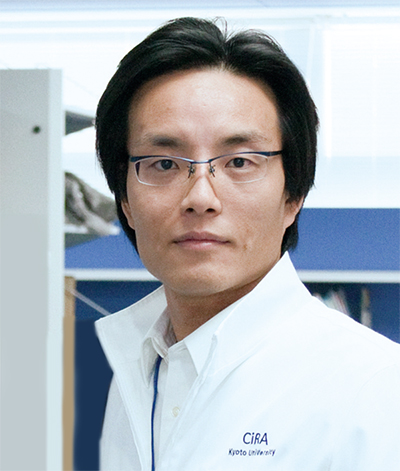
Research Activities
Research Activities
Principal Investigators
Dept. of Clinical Application
Akitsu Hotta (Associate Professor)

Akitsu Hotta Ph.D.
- Lab Website
- Research Progress in FY2024
- Contact: hotta-g*cira.kyoto-u.ac.jp
- Please change * to @
Research Overview
More than half of intractable diseases—conditions with unclear onset mechanisms and no effective treatment—are thought to involve genetic mutations. To develop novel therapies for these diseases, genetic repair technologies and patient-derived iPS cells serve as powerful tools. The Hotta laboratory is engaged in the development of a broad range of technologies with the intractable disease muscular dystrophy as its main target.
The emergence of CRISPR-Cas9 and other genome editing technologies has made it possible to partially rewrite target genes in the human genome. However, as different diseases and patients display distinct types of genetic mutations, proper genetic repair requires applying the appropriate genome editing technology with the right method. For Duchenne muscular dystrophy, we developed a genomic exon-skipping method using CRISPR-Cas9 and demonstrated in patient-derived iPS cells that it can repair the genetic mutation. We are also focusing on the unique ability of the novel CRISPR-Cas3 system to delete a large genome sequence in one direction from a target site to use this feature to expand the scope of genetic repairs made possible by genome editing further. Additionally, to deal with the risk of off-target mutations by genome editing, we have been exploring multiple avenues for enhancing the safety of the CRISPR system.
After verifying successful genetic repair in cultured cells in the laboratory, it is necessary to deliver CRISPR-Cas tools to the patient's body to repair their genetic mutation. For this, we have developed several relevant technologies, such as the NanoMEDIC virus-like particle, which can deliver CRISPR-Cas9 protein into living skeletal muscle tissue with high efficiency and low toxicity, and lipid nanoparticle (LNP) to deliver CRISPR-Cas9 mRNA through joint research with Takeda Pharmaceutical Company.
In the later stage of muscular dystrophy, there is a marked reduction in skeletal muscle cells. Therapy based on genetic repair alone is thus likely insufficient at sites lacking muscle cells, where new skeletal muscle cells and other tissue must be reintroduced. In addition to autologous cell therapy with genetically repaired patients' own iPS cells, allogeneic (isogeneic) cell therapy using iPS cells from healthy volunteers has several advantages in manufacturing. However, immune rejection due to HLA haplotype mismatch is a major concern for the latter option. To this end, we have developed a method to selectively edit HLA genes in iPS cells to reduce immune rejection risk.
The Hotta laboratory will continue developing unique technologies, utilizing CRISPR-Cas9, Cas3, and other genome editing technologies for genetic mutation repair at the molecular level; virus-like particles (VLP) and lipid nanoparticles (LNP) delivery technologies at the nanoparticle level; and HLA modification for immune escape at the cellular level. By combining the range of scientifically advanced technologies, we aim to uncover the remaining unexplored world of the human genome and develop innovative therapies for muscular dystrophy and beyond.

























